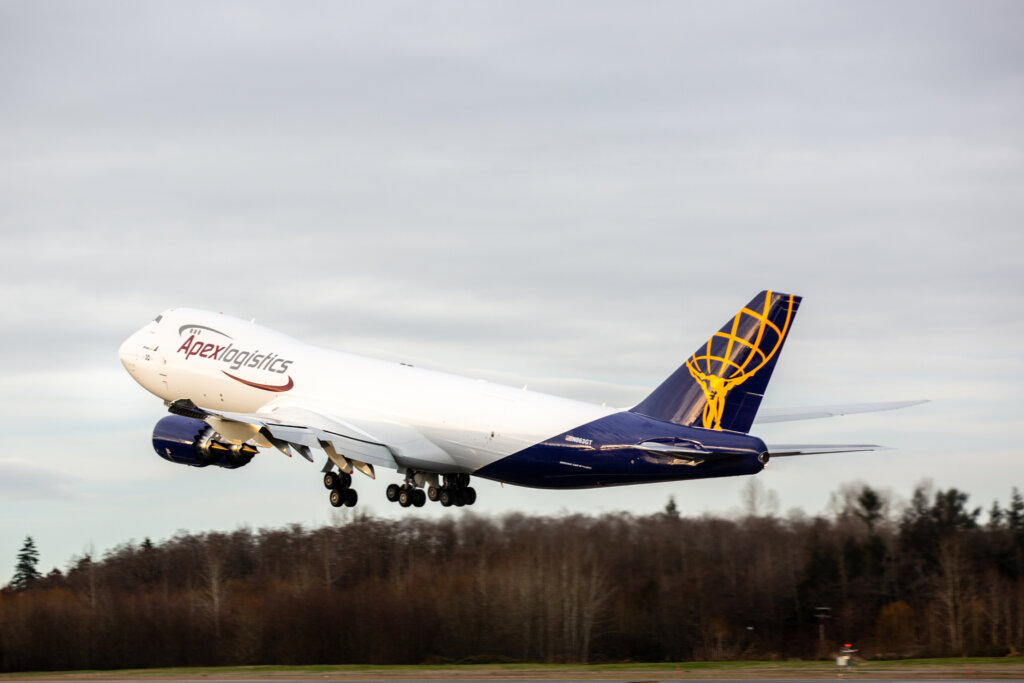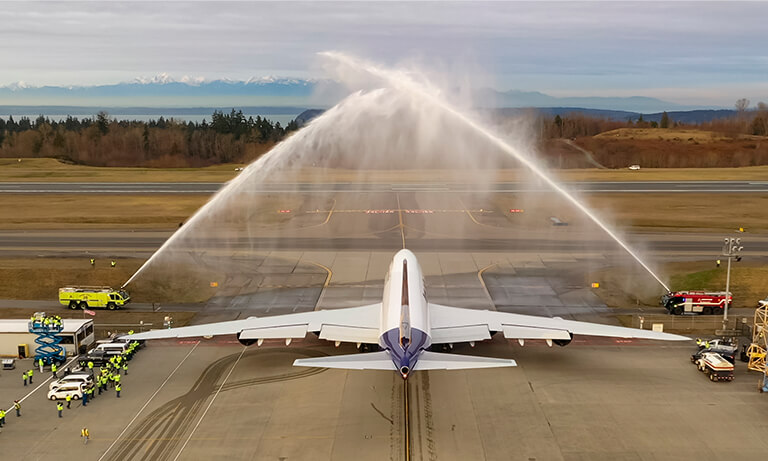Susan Chandy did not dream as a Cal Poly freshman in the fall of 2000 that her engineering education would lead to a pivotal role retiring the most famous jumbo jet in the world – the “Queen of the Skies.”
She was living on her own for the first time in a new city, adjusting to the fast-paced quarter system and keeping up with a slate of industrial engineering classes in preparation for the desk job she imagined.
Four years later, an offer to work in the Boeing Co.’s fabrication division changed everything.
“I thought I would end up in an office, wearing business suits and high heels, but here I was on the manufacturing floor with boots and safety glasses,” said Chandy (Industrial Engineering, 04), recounting her journey from the classroom to the shop floor, then into leadership at one of the world’s largest aerospace companies.
Her latest assignment will put her in the history books as the manager overseeing production of the last – or 1,547th – Boeing 747, which was rolled out for delivery in January.

During a final farewell ceremony, thousands paid tribute to the jumbo jet that revolutionized air travel and won a permanent place in American pop culture.
“The 747 shepherded in the jet era for the masses. Travel became more affordable, and the world became more connected,” Chandy said. “People remember their first flight on the airplane that still inspires awe, even for me.”
Taking a Pass on Potato Chips
Chandy spent her childhood in San Jose, California, growing up in a culture that had certain hopes for those entering the workforce.
“The expectation for me, as an Indian, was that I would become a doctor or engineer,” Chandy said.
She ruled out the medical profession after fainting during a frog dissection in her biology class but was drawn to engineering as an innate problem-solver.
“I always liked taking things apart, and I was encouraged by my dad who is an electrical engineer by trade,” she said, citing research that shows daughters emboldened by engineering fathers have a higher likelihood of entering the field.
Choosing Cal Poly, Chandy gained an immediate appreciation for her industrial engineering classes, as they allowed her to present effective solutions to a range of complex problems.
As Chandy’s industrial engineering professor, Liz Thompson remembers Chandy’s ability to take feedback and improve an outcome as she led a group project in Thompson’s class.
“She has both friendliness and technical aptitude, which is a combination that makes her a gifted leader,” Thompson said. “Her team felt more competent because she was on it.”
Chandy hadn’t initially envisioned working in the aerospace industry since she hadn’t studied aviation but saw the possibility after a Cal Poly alumnus returned to campus to share the importance of his role as an industrial engineer at Boeing.
As her 2004 graduation neared, Chandy weighed two promising offers: working as an industrial engineer at Boeing; or taste-testing potato chips as part of an operations management job at Frito-Lay.
Chandy passed on the potato chips and packed her bags for Seattle.
Pleasantly Surprised
Chandy fell in love with the manufacturing side of engineering after starting at the composite manufacturing facility in Frederickson, Washington, producing horizontal stabilizers for the 777 and vertical fins for the 777 and 787.
“We were taking raw materials and making something that flew away,” she said.
She worked within composite manufacturing the first 10 years, then moved into senior management and led teams in product development, research and technology, structural design and production on both the commercial and defense sides.
“I’ve worked at almost every Boeing campus in the Puget Sound,” said Chandy, who also earned her MBA from Seattle University along the way. “This is not what I would have guessed my career would look like, but I’ve been pleasantly surprised.”
In December 2021, Chandy was tapped as vice president and program manager for the 747 program to steward the world’s most iconic commercial jet into retirement.

The 747 was officially introduced to the world on Feb. 9, 1969, as the largest civilian passenger jet ever conceived at 230 feet long with a 196-foot wingspan and iconic upper deck. During its 54-year run, the quad-engine aircraft has starred in myriad movies and ferried millions of travelers, six presidents and even a space shuttle across the country and around the world.
“The 747 is a true beauty and holds a special place for countless travelers,” Chandy said.
We Are Going to Make It
Chandy and her group of 600 employees were on a tight timeline to deliver the final 747 to Atlas Air Worldwide – the leading global provider of outsourced aircraft and aviation operating services – and each day brought its own challenges.
Teams contracted COVID, production hit snags and the schedule brought stress, but Chandy’s crew held steady.
“There were definitely emotional highs and lows,” she said. “We had days where we were killing it to days where everything seemed to be going wrong, but through it all, everyone did a phenomenal job.”
As Chandy led the charge to ensure the jet was rolled out of the factory in Everett, Washington, for a barrage of flight tests, she was buoyed by the stories people shared about their connection to the ‘Queen.’
Boeing employees known as the “Incredibles” shared their accounts of designing and building the first 747 in just 28 months. Fifty years later, many of their own children and grandchildren worked on the final jet. Chandy also heard the stories of those who immigrated to the U.S. aboard a 747 for a job at Boeing that changed the trajectory of their lives.
“A lot of people really love this airplane,” said Chandy, visibly moved. “I get emotional talking about it.”
In the end, Chandy’s crew hit most of their milestones and all breathed a sigh of relief when the airplane passed its final flight test three days before delivery.
“After a lot of blood, sweat and tears, I thought, ‘We are going to make it,’” Chandy said.
Boeing celebrated the final 747 ever made to Atlas Air on Jan. 31. Thousands of Boeing employees watched the rollout of the plane, including Chandy who sat in the front row for the ceremony that was streamed live.
The next day, the Atlas crew paid one more tribute to the “Queen,” tracing a giant 7-4-7 and crown design in the sky enroute from the Boeing plant in Everett to the Atlas Air hub in Cincinnati.
“Imagine being in that plane as the pilot made those turns,” said Chandy, who awaits her next assignment after the delivery she called bittersweet and gratifying. “It took a lot of hard work, but our airplane flew beautifully.”
By Emily Slater


